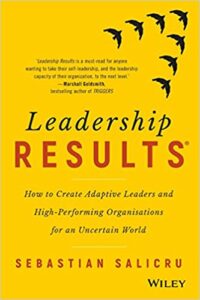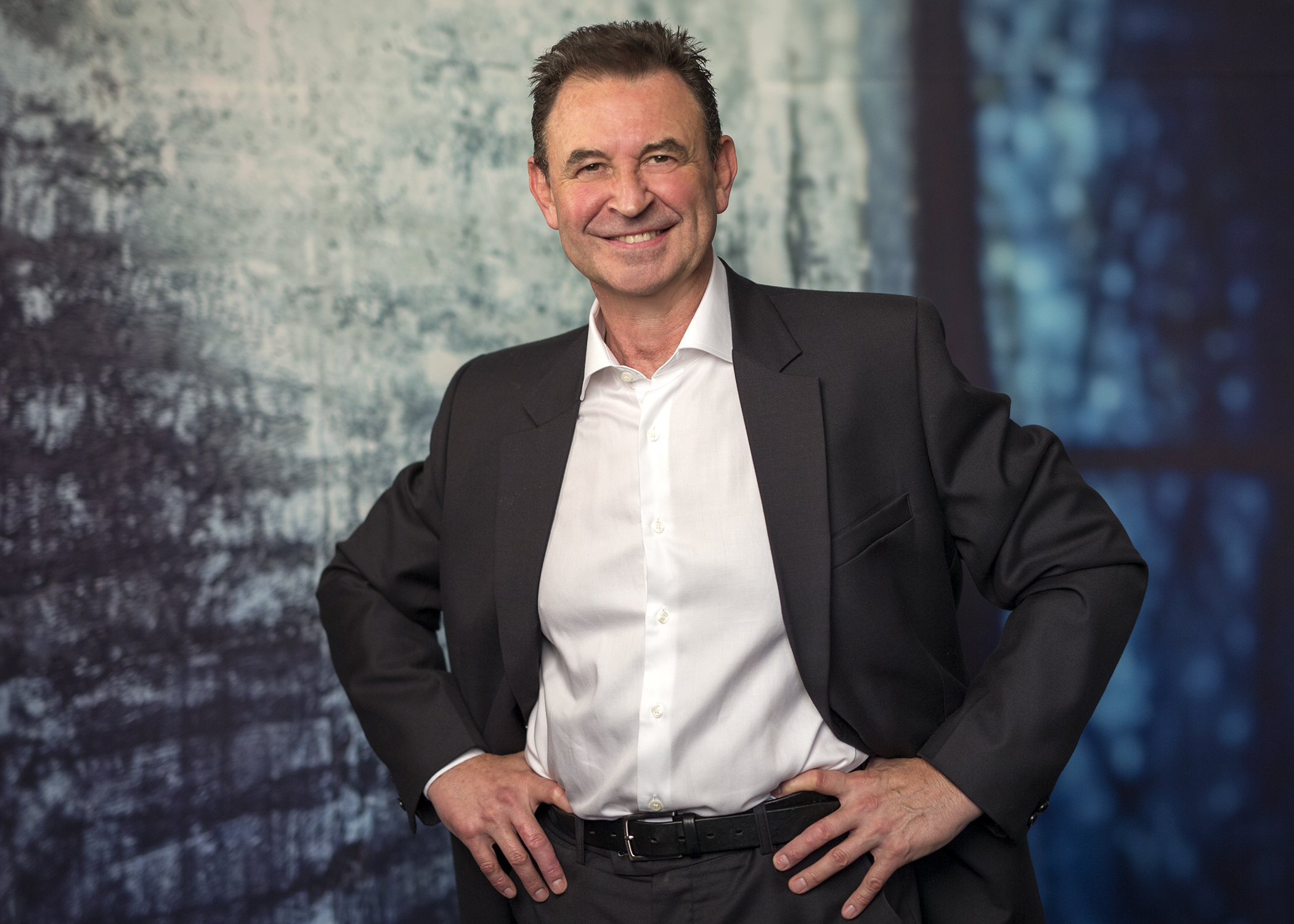Leadership Crisis
We are experiencing an unprecedented leadership crisis.
That’s what Sebastian Salicru argues in his new book, Leadership Results: How to Create Adaptive Leaders and High-Performing Organisations for an Uncertain World. We are living in a world where leaders are more likely to create “distrust, doubt, and dissent than confidence and engagement.”
Read the news and it’s easy to see why he feels this way.
Sebastian is the founder of PTS Consultants and works with executives and organizations to deliver exceptional results. I recently spoke with him about his new research.
Why is leadership experiencing such a crisis moment with increased skepticism and a marked loss of trust?
The main reason is that traditional approaches to leadership are no longer working, the game is changing and current leadership practices are outdated.
Most people think societal and economic systems are no longer working – they have had enough! Declining confidence and trust in leaders, and the consequent low levels of employee engagement, have become a problem for governments, industry—including banks—and even non-government organizations.
The 2017 Edelman Trust Barometer, which samples more than 33,000 respondents from 28 countries, found people’s concerns center around corruption, globalization, immigration, an erosion of social values and the pace of innovation. Not surprisingly, CEO credibility is at its lowest level ever. It has dropped 12 points globally to an all-time low of 37 percent, declining in all countries surveyed, and government leaders (29 percent) remain least credible. “The gap between the trust held by the informed public and that of the mass population has widened to 15 points, with the biggest disparities in the U.S. (21 points), U.K. (19 points) and France (18 points). The mass population in 20 countries distrusts their institutions, compared to only six for the informed public.”
The growing multibillion dollar leadership development industry is failing to deliver results, and according to the 2016 Harvard Business Review article ‘Why leadership training fails—and what to do about it’, corporations have become victims of ‘the great training robbery.’
Beyond research, the briefest glance at the television news or newspapers paints a vivid picture of the global leadership crisis, with escalating trends of violence, depravation, injustice, coercion and the abuse of power – pervasive images to dismay even the most casual viewer.
Clearly, our leaders are ill-prepared to fulfil what is required of them, and we are not getting the expect results we expect. Hence, the title of my new book: Leadership Results: How to Create Adaptive Leaders and High-Performing Organisations for an Uncertain World.
Based on my 20-plus years of working in management education and leadership development, I see it only deepening. I know we can do better. We needed to re-think leadership.
Rethinking Leadership
Why do we need to rethink leadership?
Because leadership and context are inseparable, and our context has changed dramatically in recent times. Today’s world is very different from yesterday’s. Mostly driven by new technologies, and social change and unrest, today we live in a very complex, high-velocity and turbulent world. Oher authors refer to this as a VUCA (volatile, uncertain, complex and ambiguous) world – an acronym borrowed from the US Army to describe extreme conditions in Afghanistan and Iraq. Leading effectively in this new world requires a very different mindset and capabilities than in the world as we knew it.
In this context, what we face are adaptive challenges – those for which they are no known solutions. We have experienced them before. While technical problems are easy to identify, well-defined, and can be solved by applying well-known solutions or the knowledge of experts; adaptive challenges are difficult to define, have no known or clear-cut solutions, and call for new ideas to bring about change in numerous places. Examples of adaptive challenges include climate change and other environmental challenges, social unrest, terrorism, suicide, violence against women, and corruption. In business, examples of adaptive challenges include designing new systems or procedures and successfully implementing them, securing agreement for a policy change, dealing with multiple complex people-management issues or stakeholder relationships.
Adaptive challenges can only be solved by those directly affected by them changing their priorities, values, beliefs, perspectives, habits and loyalties.
In addition to all this, people today are far more informed than yesterday. They want to have a voice and speak up, and they expect to get more involved in the decision-making process and activities of their communities and organizations.
You start your book talking about relationships and their hidden power. Why do you start your overview of leadership with relationships?
Two main reasons. First, leadership is fundamentally a process of social influence that entails dynamic and interactive relationships. Relating is at the heart of leadership. No one can be a leader without being in relationship with others. Leaders need followers, stakeholders or constituents. Leadership is about people. Humans crave interpersonal interaction – we seek connectedness and a sense of belonging (relationships). High-quality relationships are the currency of effective leadership.
I also learned this from my own personal and professional experience. I came to realize that by relating to people I learned who I was – my own identity. I learned that to relate effectively to others I had to adjust my ‘relating’ to them. At work, it also become obvious to me that without meaningful relating nothing gets done! You can have the best strategy, system, process and procedures, but none of them works without people’s actions. At the end of the day, people’s coordinated actions are what get results. And to coordinate people’s actions we need effective collaborative working relationships. Achieving this is one of the greatest challenges in any organization.
Shake Things Up
What’s the best way for a leader to shake things up and get out of the status quo?
First, leaders need to provide sense-making so people can understand the new context and make sense of the new reality around them. Humans seek meaning in life, in what we do or are asked to do. When there is big change, chaos and confusion, people ask themselves a very important question, what’s the story? Leaders then become sense-makers and sense-givers by telling plausible stories about what’s going on. The best leaders are great storytellers. To do so effectively, leaders need first to make sense of the new reality themselves by discovering the new terrain without maps – there are no existing maps! They need to be invented. Once the map of the new world – the current reality or ‘what is’ – has been created, the next step is visioning.
Visioning entails creating a preferred future of what’s possible – the new destination or ‘where are we going.’ Visions matter because they offer a compelling picture of the future of the organization or an achievement you choose to create. They answer the question, why am I or should I be doing this? Visions inspire and motivate people to start something new, unprecedented, bold, and sometimes unimaginable to date (e.g. We choose to go to the Moon! – JFK). This requires creative thinking and imagination. Leaders can also use stories to create a vision.
The next step is relating. Relating involves building your credibility, developing strong trusting relationships and connecting with all your key stakeholders. This requires keeping your promises, deep listening and withholding judgement, demonstrating understanding of others’ perspectives, being authentic and humble, and becoming vulnerable by admitting failures and mistakes when appropriate. Relating matters because next you need to foster adaptation and invent new ways of working collaboratively with others.
Adaptation means building the organization’s capacity to thrive in the new reality to achieve the new vision together. This is the most challenging phase, as it requires very uncomfortable work. Adaptation requires shedding what’s no longer useful and keeping what’s needed in moving forward to survive and thrive in the new context. It requires that those involved change their beliefs, values, perspectives and ultimately their behaviors to be able to tackle effectively the succession of new challenges ahead that are beyond anyone’s past experience or current expertise. Adaptation also means losses or causalities for the long-term benefit of the organization. Adaptation enables organizations to gain advantage to stay ahead of the competition.
Talk about self-leadership. What is the research showing us about this area – are we becoming more self-aware? How do we best do this?
Yes, we are. Today there are many more opportunities for everyone to learn about themselves. Conducting 360-degree assessment feedback, for example, is a very rich source for self-awareness when done properly, and it has become a very popular practice within organizations. But, awareness alone is not enough. It’s only the foundation.
The best way to move forward is by moving towards developing meta-competencies such as emotional intelligence and learning agility – the ability to learn, adapt and apply knowledge and skills to take effective action in complex and rapidly changing conditions. This allows leaders to identify complex behaviors and patterns as well as extrapolate lessons of the past to new and unfamiliar situations.
In developing leaders, we also needed to focus more on strengths development and put much more emphasis in developing character, which is what good leadership is all about.
What is collective leadership?
 Collective leadership is one of the many terms used when referring to various forms of ‘pluralistic leadership’ – an umbrella term that includes collective, collaborative, shared, distributed, and emergent leadership. Collective leadership involves all employees and means everyone takes responsibility for the success of a team or organization, not just for their own jobs. It means that leadership is distributed across the organization, rather than being centered on a few individuals in formal positions of authority.
Collective leadership is one of the many terms used when referring to various forms of ‘pluralistic leadership’ – an umbrella term that includes collective, collaborative, shared, distributed, and emergent leadership. Collective leadership involves all employees and means everyone takes responsibility for the success of a team or organization, not just for their own jobs. It means that leadership is distributed across the organization, rather than being centered on a few individuals in formal positions of authority.
Collective leadership means each individual has a voice in the organization. It means power and voice are distributed according to the capabilities and motivations in a particular team or organization. This, in turn, empowers people who then feel more valued, trusted and heard. In this way, everyone’s interaction and effort at every level drives performance and shapes the culture of the organization.
Collective leadership is relational rather than hierarchical. It enables everyone to be active in leadership roles as it flattens hierarchical workplace structures. Giving people more responsibility also means allowing them to be more accountable, take risks, make mistakes and learn from them. This can allow individuals to be more accountable and empowered, making them more committed, engaged, creative and innovative.
This means abandoning the view that properties or attributes (for example, traits, personality, or competencies) belong only to certain individuals traditionally called leaders. It also means that everyone in a team or organization takes responsibility for the progress and success of the unit, not just their own jobs or roles. This type of leadership emerges (hence the term ‘emergent’ leadership) as the team works on a challenging project for example. This contrasts with assigning a formal leader before a project begins.
Leaderful practices are collective, concurrent, collaborative, and compassionate – the four Cs.
- Collective — any member in the team/organization can provide leadership at any given time to mobilize action or make decisions on behalf of others.
- Concurrent — leadership emerges from everywhere, and at any time, as important issues arise; no one depends on one individual or authority.
- Collaborative — anyone can speak for the whole team/organization and advocate a point of view they believe can contribute to the common good.
- Compassionate — everyone is committed to preserving each other’s dignity, regardless of background, social status or point of view.
The Power of Story
I like the stories you sprinkled throughout the book. Why do stories work so well to teach us concepts?
There are various reasons. Stories are easy to remember; they stimulate multiple parts of the brain simultaneously and evoke strong emotions, build trust and credibility, focus our attention and influence decision-making.
As I mentioned earlier, storytelling is the sense-making currency of human relationships. This is because they are a powerful way to explicitly or implicitly transfer both information and emotion. When we tell or listen to stories, many areas of the brain are simulated and connected combining logic with emotions. We not only listen a story, we also experience it and feel it. Telling or listening to a story alters the neurochemical processes in the brain.
According to neuroscientists, when listening to well-told stories, our brain releases a hormone (a neurotransmitter) called oxytocin, which plays a key role in childbirth and breast-feeding. But it’s also associated with empathy, trust, sexual activity, and relationship-building. Oxytocin is also known as the ‘love hormone’ because it’s increased with touch and stimulation. When it’s released into the bloodstream, it impacts emotional, cognitive, and pro-social behaviors. The emotional response includes relaxation, trust, and psychological stability. We also know that emotions strongly influence our decisions.
Cortisol is another neurochemical that produces feelings of distress, and is also produced when we listen to stories. This sharpens our attention. It makes us pay attention and focus.
Stories serve various organizational purposes, such as socializing new employees, communicating complex ideas, persuading others to change, problem solving, conducting action research, and generating organizational renewal. During times of strategic change, for example, leaders use storytelling to drive the transformation and mobilize others to act and thrive. In this way, they attempt to support people’s adaptation (survival) to the new context. This is what adaptive leadership is – “the practice of mobilizing people to tackle tough challenges and thrive.”
What mistakes have you made in your own leadership journey that you’d redo if given the chance?
I have made many mistakes. Possibly, the major ones were failing to admit my mistakes, not being prepared to disclose them to anyone – driven by the fear of being found out and not being able to forgive myself for my mistakes. As a result of this, I wasn’t learning from them. This generated a pervasive vicious cycle that led me to extreme dissatisfaction, depression and despair. I was a very confused young man in search of identity, meaning and purpose in life. But I couldn’t find it. As an attempt to break this cycle, I got into to self-destructive behavior – excessive drinking and drug abuse. I hit my own rock bottom. I had lost my self-respect and couldn’t take it anymor
As I explain in the book, my greatest breakthrough was when I came to realize that I had considered myself a victim and believed this was a license to be self-indulgent. I had been too scared to face up to life and put my best foot forward with confidence and drive. I had uncovered a huge blind spot and no longer had an excuse for not growing up, taking life by the horns and getting on with living. I had to face the music! And I did!
One day, I read Abraham Lincolns’ quote, “My great concern is not whether you have failed, but whether you are content with your failure.” This really made me think. I also read very similar quotes from other great leaders (e.g. Mandela, Churchill, Bill Gates). I then realized that I wasn’t the only leader to fail. I understood that it was okay to fail, and failure is a vital part of growth, success, and becoming a leader. Finally, I was able to question my script in life, redefine my identity and move with confidence into the future.
Beyond this, I made other mistakes like making bad financial decision, etc. … But I learned how to let go of regrets. Otherwise, they consume your life. The best way to do this is learning to be grateful for what you got today. Gratefulness is a very powerful emotion I practice daily.
For more information, see Leadership Results: How to Create Adaptive Leaders and High-Performing Organisations for an Uncertain World.


